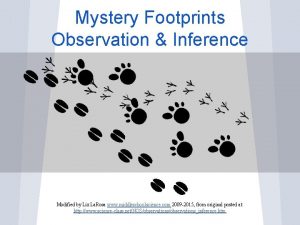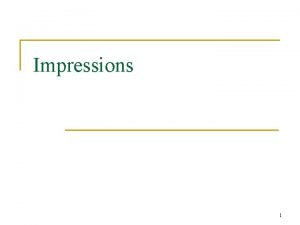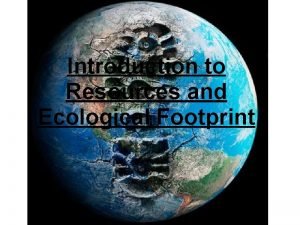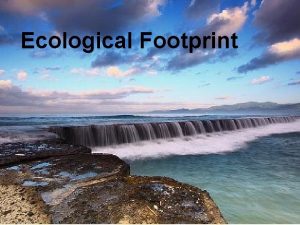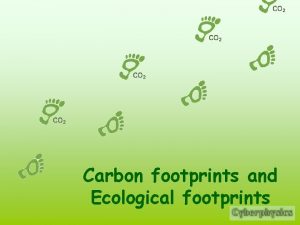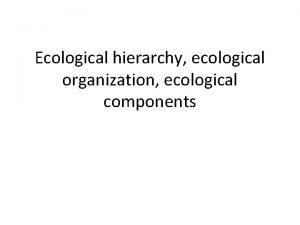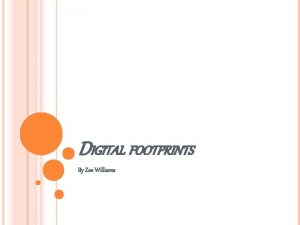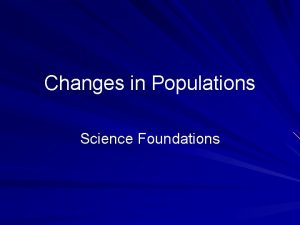Day 9 Human Populations Ecological Footprints Science 10










- Slides: 10

Day 9 – Human Populations & Ecological Footprints Science 10 Ecology

Humans and Carrying Capacity • The populations of most species are regulated by carrying capacity. • Intellectual abilities of humans have allowed us to increase the carrying capacity of the biosphere for our population. • We need to use resources sustainably and responsibly. – Sustainable use: using resources in a way • that will not cause long-term depletion of the resource (so it will be available for future generations) • that will not affect the diversity of ecosystems

Humans and Carrying Capacity (cont. ) • Human exploitation of natural resources has produced improvements to health, education, agriculture, medicine and technology = increased human carrying capacity. • Early humans were regulated by carrying capacity. Now on exceptional growth (p. 294). Current doubling time of 60 years.



Ecological Footprints and Carrying Capacity • The only way to increase the carrying capacity of an ecosystem is to increase the amount of energy and resources that can be consumed and to alter behaviour in the ecosystem

Ecological Footprints • Ecological Footprint: amount of land needed to provide resources and absorb wastes – a measure of the impact of a human individual or population on the environment. – Often given in amount of land required each year person – Information used to measure an ecological footprint: – Energy consumption – Land use – Waste production

Sustainability • Sustainability: trying to use environmental resources to meet the needs of the present without compromising the ability of future generations to meet their own needs – – Getting more from less Reduce, reuse, recycle, recover Restore and reclaim damaged environments Conserve and develop substitutes for scarce resources – Reduce consumption (need vs. want)


To Do • Day 9 Activity - Calculating your Ecological Footprint & Questions • Try with your parents and compare your answers http: //www. footprintnetwork. org/en/index. p hp/GFN/page/calculators/
 Day 1 day 2 day 3 day 4
Day 1 day 2 day 3 day 4 Day 1 day 2 day 817
Day 1 day 2 day 817 Types of visual management
Types of visual management Mystery footprints observation and inference
Mystery footprints observation and inference Take only photos leave only footprints
Take only photos leave only footprints Cai guo qiang footprints of history
Cai guo qiang footprints of history Floor footprints visual management
Floor footprints visual management Race determination from teeth
Race determination from teeth Maths is my favourite subject
Maths is my favourite subject Ecological footprint ap human geography example
Ecological footprint ap human geography example Durganand sinha ecological model
Durganand sinha ecological model



